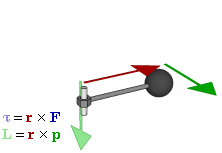Horsepower measures work done over time; torque is rotational force. Horsepower emphasizes speed, while torque focuses on strength.
TL;DR Horsepower Vs. Torque
Horsepower measures how quickly work can be done, while torque represents the twisting force produced by the engine. Both are important factors in determining a vehicle’s overall power and performance.
Horsepower is all about speed and acceleration, while torque focuses on towing power and low-end grunt. A high-horsepower engine will excel at high speeds, allowing for thrilling acceleration on highways or race tracks.
An engine with high torque will provide better pulling power for tasks such as towing heavy loads or accelerating from a standstill.
Understanding Horsepower

Horsepower is a unit of power that plays a crucial role in quantifying the performance of engines, particularly in the automotive industry. This article provides an in-depth understanding of horsepower, including its definition, history, calculation, and practical implications.
Definition of Horsepower:
Horsepower is a unit of power that measures the rate at which work is done or energy is transferred. In the context of engines, it represents the engine’s ability to perform work over time. The concept was introduced by engineer James Watt in the 18th century during the early days of steam engines. Watt sought a way to express the power of his steam engines in terms that people could relate to, and he chose the familiar work rate of horses.
Historical Context:
The term “horsepower” has its origins in the work of James Watt, a Scottish engineer. Watt wanted to market the power of his steam engines to industries that were accustomed to using horses for various tasks. He observed that a horse could turn a mill wheel and reasoned that he could equate the power output of his engines to the work done by horses, thus introducing the concept of horsepower.
Watt initially defined one horsepower as the ability to do 550 foot-pounds of work per second. This was based on his observations of large draft horses turning mill wheels. Over time, the standardization of this definition led to the establishment of the measurement we now know as one horsepower.
Calculation of Horsepower:
The calculation of horsepower involves considering both torque and rotational speed (RPM) of the engine. The basic formula is:
Horsepower= 5252/Torque×RPM
This formula demonstrates the relationship between torque and horsepower. Torque is the rotational force applied to an object, and RPM is the rotational speed. The division by 5252 is a constant that ensures the units are consistent.
Practical Implications:
Understanding horsepower is crucial, especially when evaluating and comparing the performance of vehicles. In the automotive industry, horsepower is often used as a marketing metric to convey the speed and top-end capabilities of cars. Higher horsepower generally indicates a more powerful engine capable of achieving higher speeds and faster acceleration.
It’s important to note that while horsepower is a significant factor, it doesn’t tell the whole story of an engine’s performance. Torque, which is the engine’s rotational force, also plays a vital role, particularly in tasks like towing and climbing hills. The balance between horsepower and torque is essential for optimizing overall engine performance.
Understanding Torque
Torque is a crucial concept in physics and engineering, particularly in the context of engines and machinery. This article provides an in-depth understanding of torque, including its definition, measurement, calculation, and practical implications.
Definition of Torque:
Torque is a measure of the rotational force applied to an object. In simple terms, it represents the tendency of a force to rotate an object around an axis, commonly referred to as the pivot point or the center of rotation. Torque is a vector quantity, meaning it has both magnitude and direction.
In mathematical terms, torque (τ) is calculated as the product of the force (F) applied perpendicular to the lever arm (r) and the distance from the axis of rotation:
τ=r×F
The SI unit of torque is the Newton-meter (N·m).
Measurement of Torque:
Torque is typically measured using a device called a torque wrench. This tool allows for the application of a specific amount of torque to a fastener, such as a bolt or nut, during assembly or maintenance. Torque is applied until a desired level is reached, ensuring proper tightness and preventing over-tightening, which can lead to damage.
Calculation of Torque:
The calculation of torque involves considering both the force applied and the lever arm’s length. The basic formula is:
τ=r×F
Where:
- τ is the torque,
- r is the lever arm’s length,
- F is the force applied perpendicular to the lever arm.
The direction of torque is determined by the right-hand rule, which establishes the direction of rotation based on the orientation of the force and the lever arm.
Practical Implications:
Torque plays a crucial role in the operation of engines, machines, and various mechanical systems. In the automotive industry, engine torque is a key parameter that influences a vehicle’s performance, especially in tasks such as towing, climbing hills, and accelerating from low speeds.
High torque at low engine speeds is desirable for tasks like towing, as it provides the necessary rotational force. However, in applications where high speeds are essential, such as racing cars, a balance between torque and rotational speed (RPM) is crucial.
Understanding torque is also vital in the design and maintenance of machinery. Engineers need to calculate and consider torque requirements to ensure that components, such as gears and shafts, can withstand the applied forces without failure.
Horsepower Vs. Torque – Key differences
| Characteristic | Horsepower | Torque |
|---|---|---|
| Definition | The rate at which work is done or energy is transferred. It's a measure of the engine's ability to do work over time. | The rotational force applied to an object, often measured in pound-feet (lb-ft) or Newton-meters (Nm). |
| Symbol | hp (or PS in some regions) | lb-ft (pound-feet) or Nm (Newton-meters) |
| Calculation | Horsepower = (Torque x RPM) / 5252 | Torque = (Horsepower x 5252) / RPM |
| Importance | Indicates the overall power of the engine. | Indicates the engine's rotational force. |
| Role in Acceleration | Higher horsepower contributes to faster acceleration. | Higher torque provides better initial acceleration and towing capabilities. |
| Engine Characteristics | Reflects the engine's ability to sustain high speeds and maintain power over a range of RPM. | Influences the engine's performance at lower RPM, important for tasks like towing and climbing hills. |
| Measurement Unit | Typically measured in horsepower (hp) | Measured in pound-feet (lb-ft) or Newton-meters (Nm) |
| Relationship | Related to torque and RPM through the horsepower equation. | Related to horsepower and RPM through the torque equation. |
| In Vehicles | Often used to market a car's speed and top-end performance. | Emphasized in marketing for trucks and vehicles requiring significant pulling power. |
Real Life Examples of Horsepower and Torque
Horsepower and torque are crucial concepts in the automotive and engineering industries, influencing the performance of vehicles and machinery. Here are real-life examples that illustrate the application of horsepower and torque in various contexts:
Automotive Engines:
- Horsepower Example: In a car engine, horsepower is a measure of the engine’s ability to do work over time. For instance, a sports car may have a 300-horsepower engine, indicating its capability to deliver significant power for quick acceleration and high speeds.
- Torque Example: Torque, on the other hand, influences the car’s ability to accelerate and tow. A truck with high torque, even at low engine speeds (low RPM), is effective for tasks like towing trailers or climbing steep inclines.
Electric Motors:
- Horsepower Example: In electric vehicles, the power of the electric motor is often measured in horsepower. A high-horsepower electric motor contributes to faster acceleration and higher top speeds.
- Torque Example: Electric motors deliver instant torque, providing quick acceleration from a standstill. This characteristic is advantageous in electric vehicles, especially for city driving.
Industrial Machinery:
- Horsepower Example: In industrial settings, machinery like pumps, conveyors, and compressors is rated in horsepower. For example, a factory might use a 50-horsepower motor to drive a conveyor system.
- Torque Example: Torque is crucial in heavy machinery where high rotational force is required. For a crane lifting a heavy load, a motor with high torque ensures the necessary lifting power.
Sports Performance:
- Horsepower Example: In sports, particularly horse racing or cycling, the term “horsepower” is used metaphorically to describe the athletes’ power output. A sprinter with high horsepower can generate a burst of speed.
- Torque Example: Torque is relevant in sports like rowing or cycling, where athletes need strong and sustained rotational force. Cyclists, for instance, rely on torque during uphill climbs.
Marine Applications:
- Horsepower Example: Boat engines are often rated in terms of horsepower. A higher-horsepower marine engine allows a boat to achieve higher speeds.
- Torque Example: Torque is crucial for marine propulsion, especially when dealing with large vessels. It influences a ship’s ability to navigate through water and overcome resistance.
- Horsepower Example: Tractors used in agriculture are rated in horsepower. Higher-horsepower tractors can efficiently operate larger implements for tasks like plowing or harvesting.
- Torque Example: Torque is important for tasks like pulling heavy loads or operating machinery that requires significant rotational force in farming applications.
Image Credits
Featured Image By – jcomp on Freepik
Image 1 By – Yawe, Public domain, via Wikimedia Commons
Image 2 By – Own work, original version in German by Sgbeer, CC BY-SA 3.0, via Wikimedia Commons









